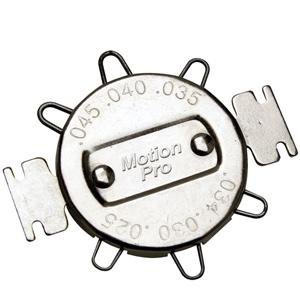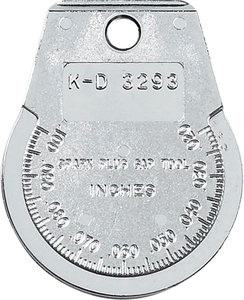You're arguing about the weaknesses of a tool designed for the purpose and preferencing one not designed for the purpose, even though you've never used the one that is the intended and recommended tool..
The gauges given on the gapping tools, are 'all' the recommended gaps... Why would you set it to something to other than the recommended gap for your engine/compression ratio, etc?..
Unless you were into racing, in which case there are gappers with a wider range of settings?
There was also another kind that involved a graduated lip around the circumference of the tool, with markings along the way that would allow you to set 'any' gap you wanted.. It was a flat gauge but very narrow, and as such was still a far superior way of setting gap over feeler gauges... And it could be kept on your key ring..
You are arguing that it is better to not use the right tool for the job.. That is an argument you will lose every time... If you actually try one some time, you will instantly understand that they are 'not' easy in comparison..
and LOL @ the "if you know how to use one" comment.. I could teach my dog how to use one.. They're not rocket science... unless you can't do basic addition..
Feeler gauges 'can' be used in a pinch if that's all you have.. They will get you close... But they are no where near as accurate as the 'right tool for the job'... because it is near impossible to keep them perfectly flat inside the gap.. Not to mention that they were 'much' more time consuming and difficult to use
I found an example of the other kind I was talking about.. I had one similar on my key ring back when I was into bracket racing.. as I had to set the gap on my plugs 2-4 times a week...


 )... These days, you almost need a bore scope to find key items to check on engines. Or you have to lift the engine out to change the plugs.
)... These days, you almost need a bore scope to find key items to check on engines. Or you have to lift the engine out to change the plugs. 
